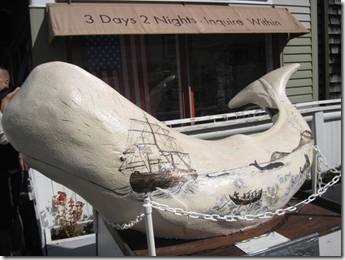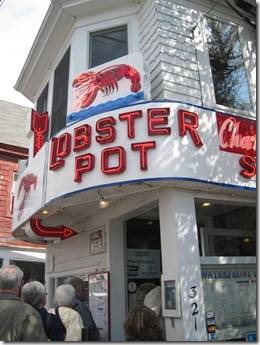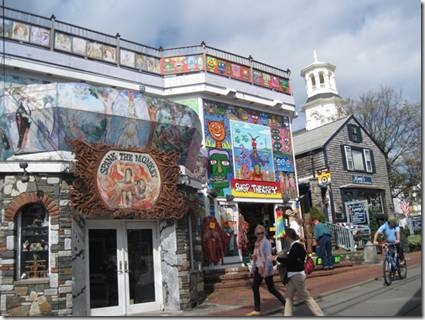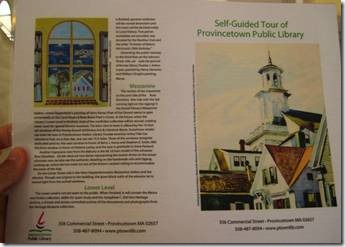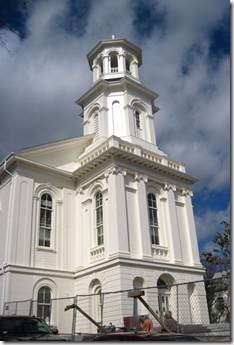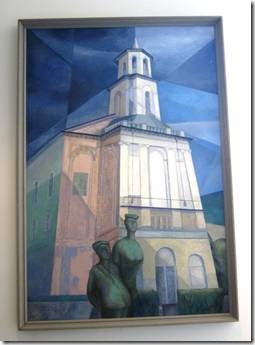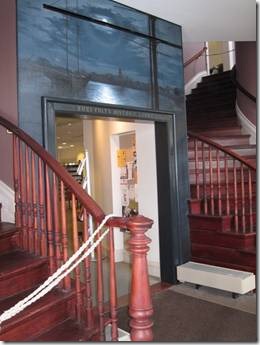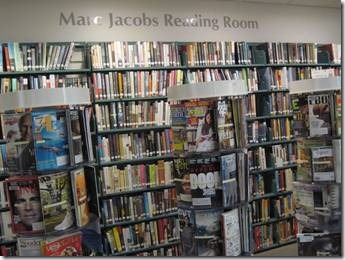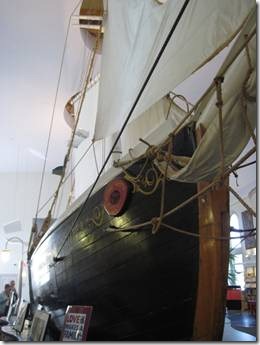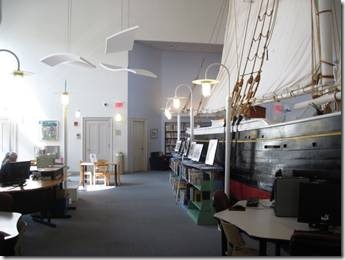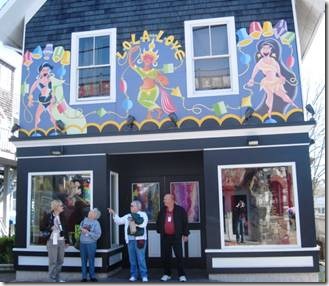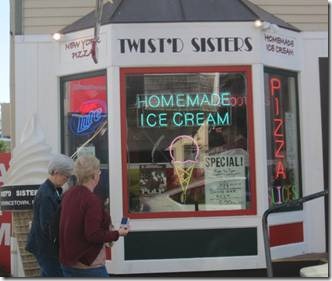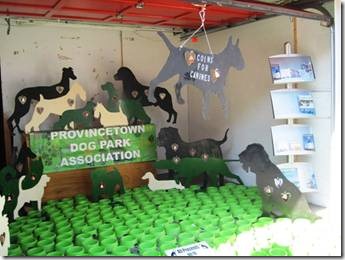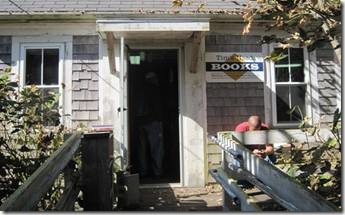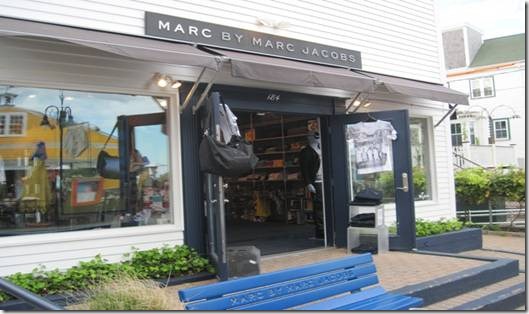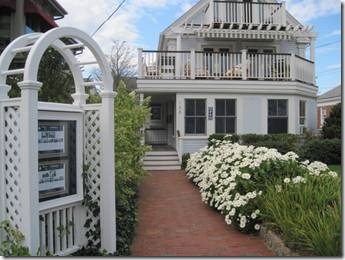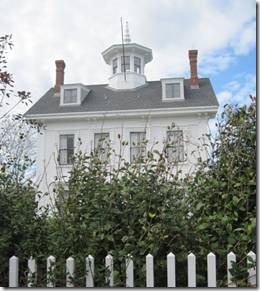We arrived home in Roanoke late afternoon and I’m still sorting through the debris from our trip. What had seemed like a logical packing plan eventually deteriorated into a daily hunt for clean underwear, vitamin pills, and breakfast supplies. We had taken loads of cold weather clothes so I had to borrow a bathing suit from our friend Har for my swim at Horseneck Beach. The down jackets and wool sweaters were never needed. It was blustery and chilly on Lake Sharbot, Ontario but not colder than our day trip in Tibet to see Mt. Everest. And everyone had heat, hot water and lots of blankets when the weather changed from Boston to points north.
I hope to get caught up with our trip in the next week or so. I took loads of photos so that takes some sorting through but it’s fun to make the trip a second time as I do it. We loved seeing the friends we could and sorry we missed the friends we couldn’t visit; but there is always next year.
Provincetown, MA
Images and Street Scenes
Scrimshaw and Lobster Pots…but we had our lobster with friends so didn’t need to eat one here.
Psychedelic and Cape Cod Traditional
The Provincetown Public Library
While Randal sat using his computer in the Marc Jacobs (that Marc Jacobs!) Reading room, I took myself on a self-guided tour of the newly renovated library. The following is from the Library’s website.
“The Provincetown Public Library is located in the building that was once the Center Methodist Episcopal Church. This structure, like many in Provincetown, has had a long and varied history of use. When it was built in 1860 as the Center Methodist Episcopal Church it was reputed to be the largest church of Methodist denomination anywhere in the United States. It cost $22,000 to complete and could seat 900 people in the 128 pews.
The original steeple, weakened during the Portland Gale, was 162 feet tall and contained a huge bronze bell cast by George Holbrook in Medway, Massachusetts. The present spire rises 100 feet from the ground. Looking from the end of MacMillan Wharf towards town, the building is one of the most prominent on the skyline.
In 1958 the Methodist congregation sold this building at 356 Commercial Street to Walter P. Chrysler, Jr., son of the founder of the Chrysler Corporation, for conversion to an art museum. Walter Chrysler ran the Chrysler Art Museum with limited success until 1970. Discouraged when the Town of Provincetown would not help him find parking for visitors to the museum, Chrysler packed up his collection and moved to Virginia where he opened a modern facility still operating today.
For a number of years the building stood abandoned until, in 1974 two local men, Jules Brenner and Frederic Jungmann, bought the building from Chrysler for $90,000 with the idea of starting a “Center for the Arts.” Unfortunately the idea was a cultural success but a financial failure, and the building was bought back by the bank after only one year of operation.
Through the efforts of the Provincetown Historical Association and the Historic District Study Committee, the building was nominated to the National Register of Historic Places. It received certification in October 1975. Subsequently in 1976, at a special town meeting, a group of citizens secured a vote to acquire the building for $135,000 and turn it into a local historical museum. The Provincetown Heritage Museum officially opened to the public on July 4, 1976. A dedicated group of volunteers set up exhibits on various aspects of the town’s heritage. It was at this time that the half scale model of the schooner Rose Dorothea was built and installed in the building. The Heritage Museum operated on a seasonal basis with a minimal staff and a dedicated group of volunteers through the summer of 2000.
Through the years the number of people visiting the Heritage Museum had gradually begun to decline. At the same time use of Provincetown’s public library, located in a small building on the corner of Freeman and Commercial Street, was steadily growing. A new library building was needed to accommodate this increased use. After much study and discussion with citizens of the town, the Trustees of the Library concluded that the building housing the Heritage Museum at 356 Commercial Street could be successfully renovated and transformed into a new library for the Town.” http://www.provincetown-ma.gov/index.aspx?nid=687
The “Self-Guided Tour” brochure that is kept at the circulation desk.
Actual library today…. Homage to Heritage Museum and Chaim Gross by Mary Spencer Nay
“Mary Spencer Nay, 80, Painter and Professor
Mary Spencer Nay, a painter and retired art professor, died on Saturday at her home in Provincetown, Mass. She was 80.
The cause was gastrointestinal illness, said her daughter Malu Nay Block of Provincetown.
Ms. Nay was born in Crestwood, Ky., and graduated from the University of Louisville with a master’s degree. She began teaching art at the university in 1942 and was a professor of art education when she retired in 1979.
She settled in Provincetown, where she had spent summers since 1937. She was active in the Provincetown Art Association and Museum, the Heritage Museum, the Historical Association and the Visual Artists Cooperative.
Her paintings, mainly abstractions inspired by Provincetown and her travels in Mexico, hang in numerous museums and private collections. The J. B. Speed Art Museum in Louisville presented a retrospective of her work in 1976.” http://www.nytimes.com/1993/05/26/obituaries/mary-spencer-nay-80-painter-and-professor.html
http://sites.google.com/site/kentuckywomenartists/Home/mary-spencer-nay-1
I’m off on a tangent again. I took the photo of the Nay painting but thought nothing about it until now as I’m writing this blog mail. I like the painting so looked for information about Mary Spencer Nay. But the title of the painting intrigued me too so I looked up Chaim Gross and found that the Smithsonian has a sculpture by Gross.
“The subjects of Chaim Gross’s sculptures and graphic works were predominantly women and circus performers. For almost seventy years, the variety of movements and poses and the sense of balance displayed by these subjects provided Gross with an endless source of ideas for his art.”
http://americanart.si.edu/exhibitions/online/gross/
Main staircase at the front door and the Marc Jacobs Reading Room
Rose Dorothea
A half-scale replica of the Rose Dorothea takes center stage in the middle of the children’s room. The Lipton Cup was sponsored by the founder of Lipton Tea, (one of the few teas I actually don’t like.) There is a link from the website below if you want to see what the Lipton Cup looks like. My photos didn’t really capture it.
“It is 66 ½ ft. in length with a beam of 12 ½ ft. The mainmast is 48 ft high. The sails were hand-sewn by Ernest W. Smith of New Bedford, one of the few men left who could create authentic sails for a Grand Banks Schooner.”
THE SCHOONER “ROSE DOROTHEA” AND THE “LIPTON CUP”
“During Boston’s Old Home Week Celebration in August 1907, a cup was offered by Sir Thomas Lipton for a fishermen’s Race in Massachusetts Bay. This race of 42 miles was one of the best ever sailed by fishermen in these waters. Sir Thomas Lipton, the great Irish sports enthusiast, and designer Tom McManus promoted the Fishermen’s Race, and Sir Thomas promised McManus the most expensive and best trophy England could make.
The Lipton Cup is a silver gilt and enamel trophy and, true to his word, was the largest cup ever minted by Sir Thomas Lipton. The "Rose Dorothea" swept to victory in the Fishermen’s Race on August 1, 1907 and brought the Lipton Cup back to Provincetown with great fanfare, a broom symbolically tied to her mast to indicate a "clean sweep." No other race was ever sailed to place this cup in contention.” http://www.ptownlib.com/schoonerandliptoncup.htm
Now more photos of Provincetown……
Provincetown was home to Pilgrims and play-writes, gays, straights, and people in-between. That’s what makes it so fun.
Tim’s Used Books in Provincetown…
The Marc Jacobs shop that paid for the Marc Jacobs Reading Room….
Architecture that says New England to me.
The National Seashore is also found in Provincetown thanks to President Kennedy who in 1961 signed the legislation creating the Cape Cod National Seashore.
"A man may stand there and put all America behind him." Henry David Thoreau
http://ptownchamber.com/ for more info.

